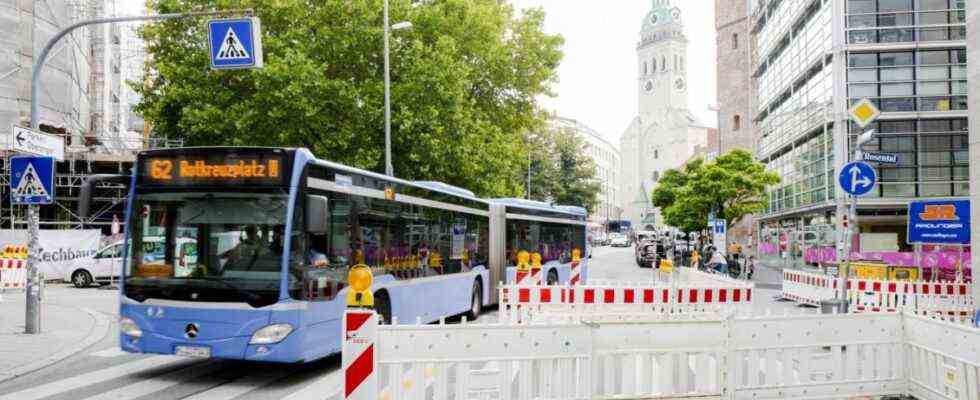New tracks, better timing at the traffic lights: the city council decides eight measures to ensure that the buses move faster. And further improvements are already planned.
The city creates new lanes, switches traffic lights more skilfully and shows stopping bans so that public transport buses can move faster. The city council decided on eight such improvements, but postponed the decision on eleven more until autumn. The acceleration program for the buses, one of the key points for a rapid turnaround in traffic, is like a business trip for the Münchner Verkehrsbetriebe (MVG): Basically everything is running, every now and then there is a stop and go like in rush hour traffic. And sometimes everything stands still for a while.
The bus program last experienced such a phase. For about a year the desired 19 projects of the so-called third bundle of measures haunted the administration. In the meantime, the new mobility department was founded, responsibilities changed and then the green-red coalition did not know how to finance the work in the midst of the corona financial crisis. When it finally landed in the mobility committee in July, it happened at such short notice that the CSU was unable to examine and debate all the desired measures. Therefore, the city council decided on Wednesday evening in the general assembly only eight out of 19 improvements.
On the Grillparzerstrasse and Einsteinstrasse, a separate bus lane is shown on each section. On Grillparzerstraße, this should save the bus lines 54, 58 and 100 up to four and a half minutes of time over a distance of only 270 meters. The lane will be set up to the south between Prinzregentenstrasse and Einsteinstrasse; there will be no parking spaces and a right-turn lane. On Einsteinstrasse, buses X30 and 149 are to move faster into town on the lane marked in the future at the end of the Passau autobahn.
MVG vehicles are to benefit from better traffic light switching at intersections three times: on Isartal-Lagerhausstrasse (as a traffic test), on Garmischer Strasse / Luise-Kiesselbach-Platz and at the corner of Falkenstrasse / Mariahilfplatz. The three other projects that are to be implemented quickly in 2021 concern new stopping bans. In Denninger Strasse (west), Am Blütenanger and Vesaliusstrasse, buses should be able to run more quickly on sections of the road.
The city council plans to adopt the remaining eleven improvements in the third bundle in the fall. Their implementation was planned for 2022 anyway. The eight approved projects should have an impact this year if possible. The first two bundles of the bus acceleration program were decided in 2018 and 2019. Eight out of nine projects from the first package have been implemented, only on Brudermühlstrasse there is still a problem. In the second, two improvements have been completed, four are still in the works and one has been pushed into number three. So the city is reasonably on schedule.
The bus acceleration program started almost five years ago. At that time, the MVG had submitted 50 proposals to politicians for faster journeys in the city.

